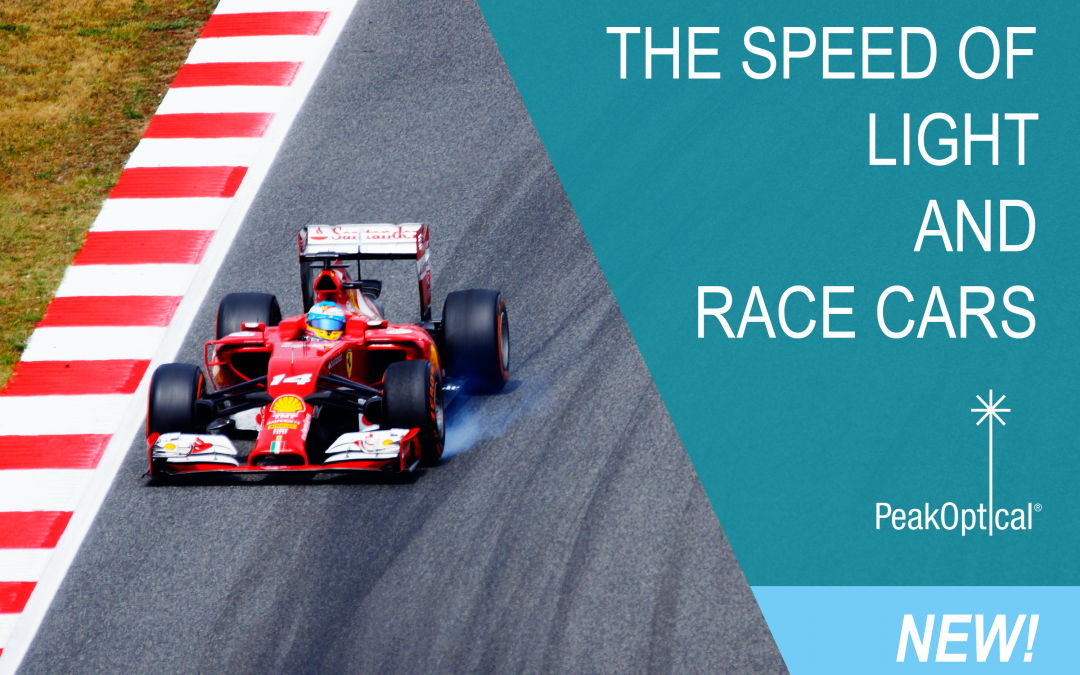We like fast speeds. There’s no big surprise here. We’re working with fiber optic components and it is our main purpose to make sure our customers send data from one source to another in no time, in a safe and reliable environment. And because we are so animated by fast speeds, lately we have developed a great interest in motorsports.
How many times haven’t we heard people say race cars are as fast as the speed of light? Well, that’s not exactly true. While their speed is very impressive and increases the level of adrenaline of any autosport enthusiast, a top race car can only reach up to 372.6 km/h. The speed of light actually travels 299 792 458 m/s (measured in a vacuum) – Impressive, isn’t it?
The speed of light and fiber optics
If measured in a medium other than a vacuum, the speed of light is decreasing. In the case of fiber optics that use silica glass, the speed of light is actually 31% slower.
Light travels faster through the air than glass. That’s why the flexible, fiber optic solar cell was invented a few years back. These fibers are as thin as a human hair, yet they produce electricity just like solar cells.
Here’s an impressive fact: researchers at the University of Southampton in England have produced optical fibers that are able to transmit information at 99.7% of the speed of light.
The speed of light and racing cars
It is clear to everyone that race cars are far away from reaching the speed of light (like everything else is). Actually, in order to reach the speed of light, a race car should be moving at around 90 million m/s – That’s a lot! Still, their speed and technology are feeding our passion for sports. PeakOptical will be supporting the Danish professional racing driver Anders Fjordbach’s campaign in the Asian Le Mans Series 2018/2019 season, where he aims to pre-qualify for the 24 Hours of Le Mans, taking place in June 2019. Read the full story here.


